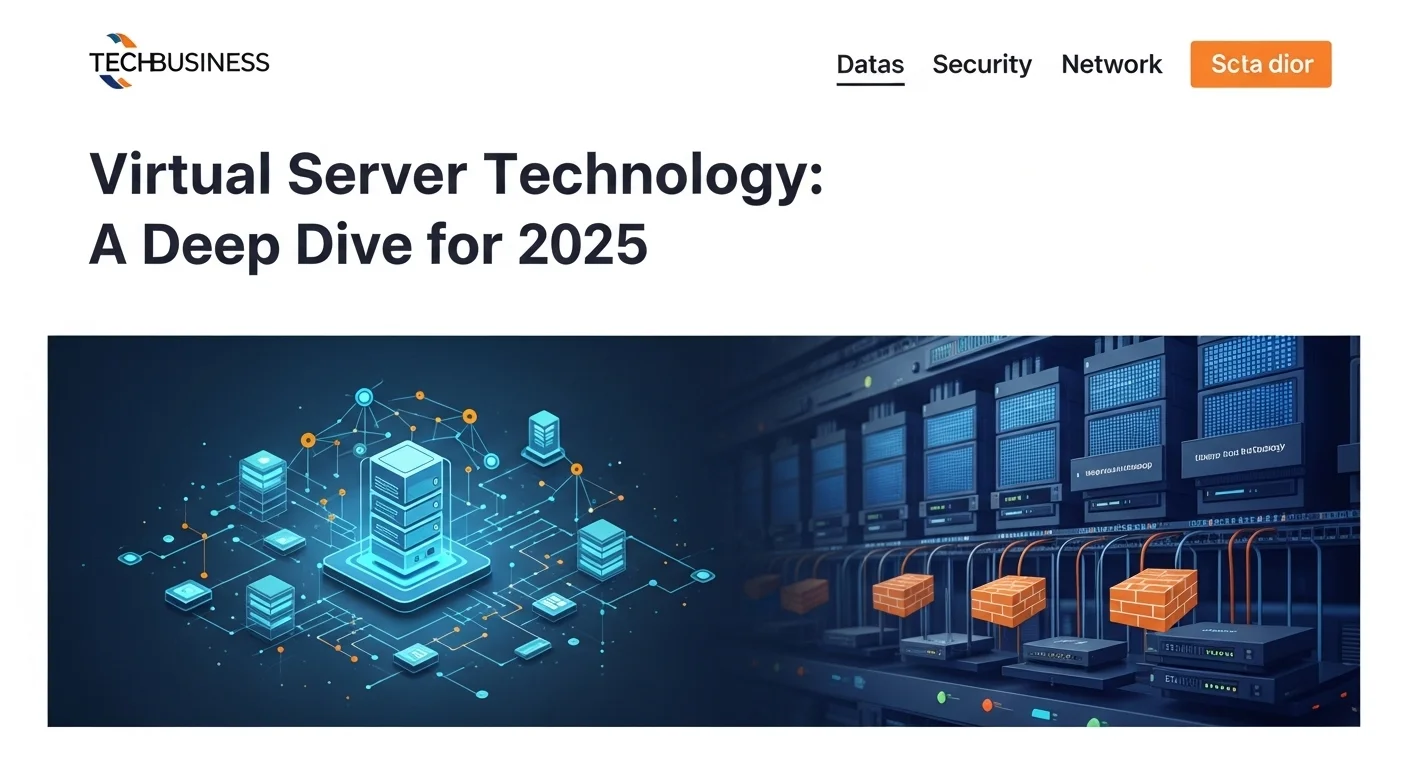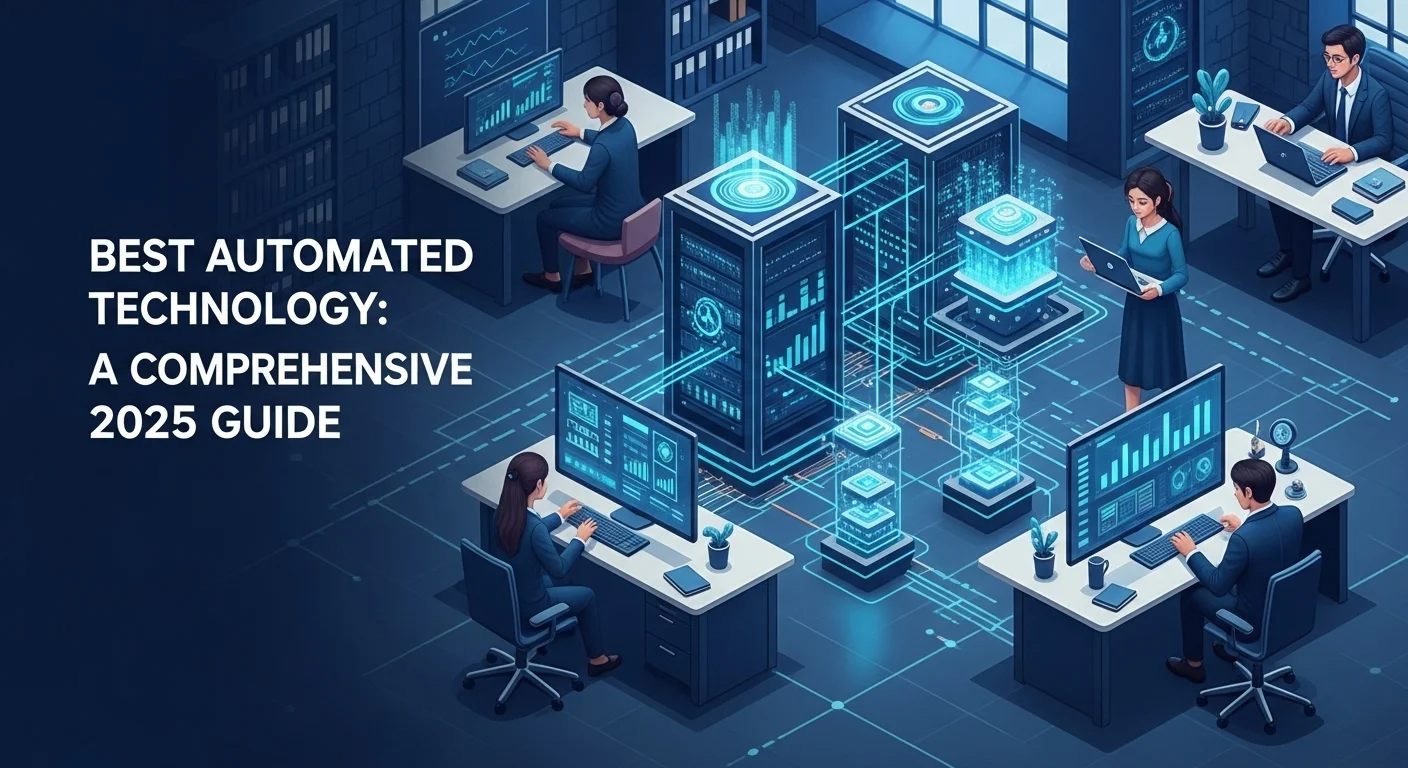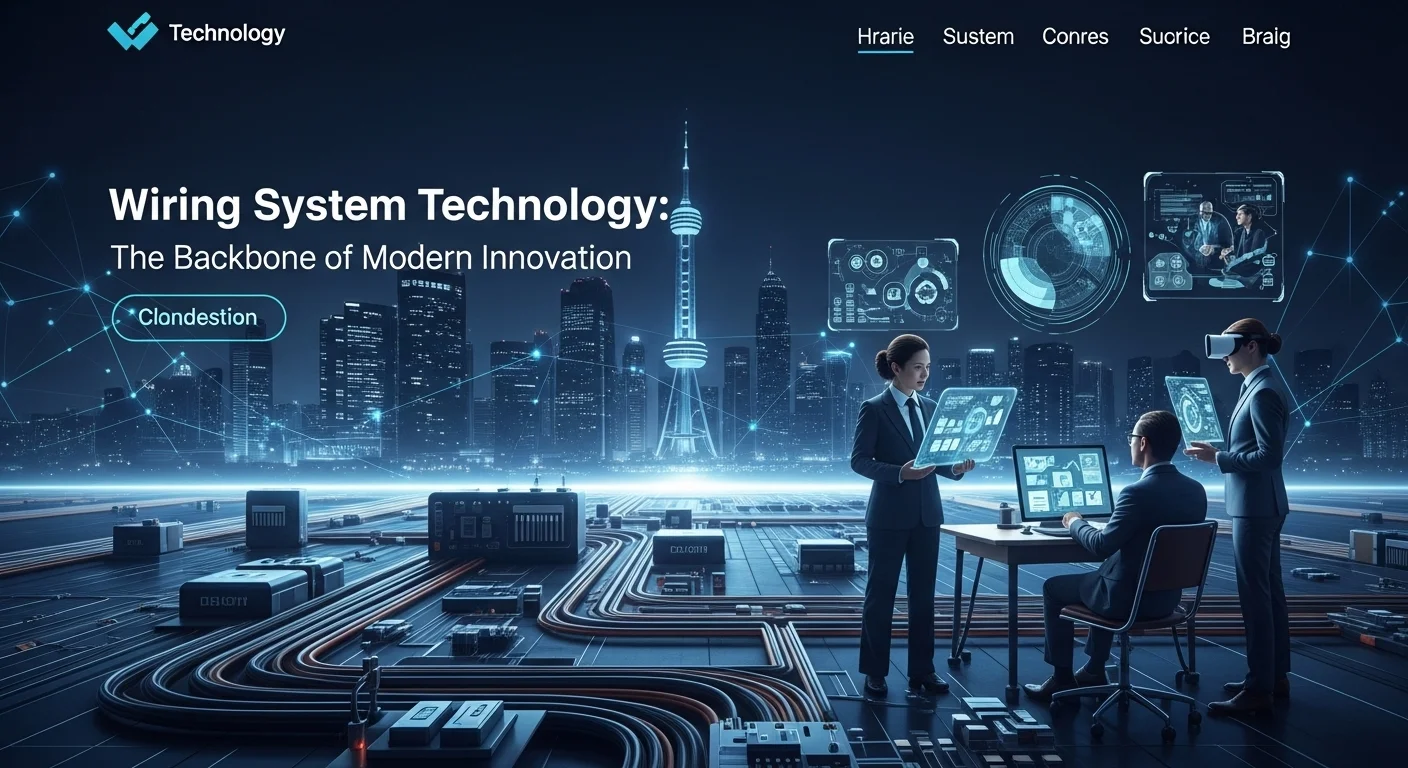Virtual Servers Explained: My Simple Guide to How They Work (2025)

Executive Summary
In my early days in IT, I remember the grind of setting up new physical servers. It meant weeks of waiting for hardware, hours spent in a cold data center, and the sinking feeling of seeing that brand-new machine use only 10% of its power. Then, virtual servers changed everything. They are the invisible engine behind the modern internet, and understanding them is key to understanding the cloud. This article is my personal guide to this transformative technology. We'll explore what a virtual server is—essentially, creating multiple 'virtual' computers on one physical machine. This simple idea has led to huge cost savings, incredible flexibility, and robust disaster recovery plans for businesses of all sizes. We'll look at the big players, like Amazon's AWS and Google's Cloud, and I'll share my experiences on how they stack up. Whether you're running a business, managing IT, or are just curious about the tech that powers your favorite apps, this guide will give you a clear, human-friendly understanding of virtual servers and how to make them work for you.
Table of Contents
- What is a Virtual Server and Why Does It Matter?
- A Practical Guide to Virtual Servers and Business Solutions
- My Top Tips for Managing Your Virtual Servers
What is a Virtual Server and Why Does It Matter?
In the world of tech, we love our jargon, but the idea behind a virtual server is surprisingly simple. Imagine you have a huge, powerful computer. Instead of running just one operating system and set of apps on it, what if you could digitally partition it into several smaller, independent computers? That's exactly what a virtual server is. It's a software-based computer that runs on a piece of physical hardware, sharing its resources with other virtual servers. The magic that makes this happen is a piece of software called a 'hypervisor.' I like to think of the hypervisor as a building manager for a large apartment complex. The physical server is the building, and the hypervisor divides it up into individual apartments—our virtual servers. Each apartment is completely isolated, with its own front door (operating system), utilities (CPU, memory), and furniture (applications). So, you could have one apartment running Linux for a website, another running Windows for a database, and a third for testing new software, all co-existing peacefully in the same building. The importance of this is massive. Before virtualization, we lived in a 'one server, one application' world. If you needed a new app, you bought a whole new physical server. I've seen data centers filled with hundreds of these machines, most of them barely breaking a sweat, running at just 5-15% of their capacity. It was an incredible waste of money, electricity, and space. Virtualization changed the game by letting us consolidate. We could now run dozens of virtual servers on a single physical machine, pushing its usage up to 80% or more. The benefits were immediate. First, the cost savings are huge. Fewer physical machines mean lower hardware costs, smaller electricity bills, and less physical space needed. But beyond the money, it's about speed and flexibility. I remember waiting weeks for a new server to be delivered and installed. Today, I can spin up a new virtual server in minutes. This agility is what modern business thrives on. It's the core of what makes the virtual server in cloud computing so revolutionary. Cloud giants like Amazon Web Services (AWS) and Google Cloud have built their empires on this technology. When you rent an AWS virtual server (they call them EC2 instances) or a Google virtual server (from their Compute Engine), you're renting one of these 'apartments' in their massive data centers. They handle the physical building and the management, while you get a powerful, scalable virtual machine on demand. This model of server virtualization in cloud computing is what allows them to offer everything from tiny servers for a personal blog to supercomputers for AI research. Another benefit I can't stress enough is disaster recovery. Backing up a physical server used to be a nightmare. With a virtual server, the entire thing—OS, apps, data, and all—is just a collection of files. You can copy these files, move them, and in case of a hardware failure, relaunch the server on another physical machine in minutes, often with no downtime at all. This concept of cloud server virtualization in cloud computing is the bedrock of our digital world. It's what enables the 'as-a-service' economy, where you can access powerful infrastructure (IaaS), development platforms (PaaS), or ready-made software (SaaS) through the internet. At the end of the day, a virtual server is more than just clever tech. It's an enabler. It allows companies to be more efficient, innovative, and resilient. It's the reason a small startup can access the same computing power as a global enterprise, leveling the playing field for everyone.

A Practical Guide to Virtual Servers and Business Solutions
So you understand the 'what' and 'why.' Now for the fun part: the 'how.' How do you actually choose and manage virtual servers to solve real business problems? This is where my hands-on experience comes in. Let's get practical. First, let's talk about the 'building manager' I mentioned: the hypervisor. There are two main kinds. Type 1 hypervisors, like VMware's ESXi or the open-source KVM, run directly on the server hardware. They're the gold standard for performance and are what giants like AWS and Google use in their data centers. Type 2 hypervisors run on top of an existing operating system, like VirtualBox on your laptop. They're great for development and testing but not for running serious business applications. When we talk about a virtual server in cloud computing, we're always talking about the power of Type 1. It's also important to understand the difference between virtualization and its popular cousin, containerization (think Docker). While server virtualization in cloud computing creates a whole virtual machine with its own OS (like a separate house), containerization virtualizes the OS itself (like apartments in one building sharing the main plumbing). Containers are lighter and faster, but virtual machines offer stronger isolation and can run different operating systems on the same host. In my work, I often use them together, running containers inside a Google virtual server to get the best of both worlds. For most businesses today, the big question is whether to build your own virtualized setup or go with a cloud provider. For years, I helped companies build on-premises data centers, but unless you have very specific security or regulatory needs, the cloud is almost always the smarter choice. You trade a huge upfront cost for a flexible pay-as-you-go model. This leads us to the big showdown: AWS virtual server (EC2) vs. Google virtual server (Compute Engine). They are more similar than different, but the details matter.
- Machine Types: Both offer a vast menu of pre-configured virtual servers for general use, memory-heavy tasks, or high-performance computing. Where Google has a slight edge, in my opinion, is with its Custom Machine Types. I've had projects where I needed a very specific amount of CPU and RAM, and being able to create a custom VM without paying for resources I didn't need was a huge cost-saver.
- Pricing: Both have pay-as-you-go On-Demand pricing. If you know you'll be using a server for a year or more, you can get massive discounts with AWS Reserved Instances or Google's Committed Use Discounts. Where it gets interesting is with Spot Instances (AWS) or Spot VMs (Google). You can get up to a 90% discount on their spare capacity. The catch? They can take the server back with little notice. It's perfect for tasks that can be interrupted and restarted, and I've saved clients thousands by using them for data processing jobs.
- Storage: An AWS virtual server uses Elastic Block Store (EBS) as its virtual hard drive. Google's version is called Persistent Disk. Both are fantastic and offer different speed tiers. Think of it as choosing between a standard hard drive and a super-fast SSD for your virtual computer.
- Networking & Security: Both give you a Virtual Private Cloud (VPC), which is like your own private, isolated section of the cloud. You control who and what gets in and out using virtual firewalls (Security Groups in AWS, Firewall Rules in Google). I find Google's global VPC a bit simpler for setting up infrastructure across different continents, but both are incredibly powerful and secure.

My Top Tips for Managing Your Virtual Servers
Getting your virtual servers up and running is just the first step. To really get the most out of them, you need to manage them wisely. Over the years, I've developed a set of core strategies that have saved me from countless headaches and saved my clients a lot of money. Here is my essential advice.
1. Automate Everything with Infrastructure as Code (IaC)
If you're still configuring servers by hand, please stop. It's slow, it's prone to human error, and it just doesn't work at scale. The modern way is Infrastructure as Code (IaC), using tools like Terraform or Ansible. You write simple code files that define your entire setup—from your Google virtual server specs to your network rules. Trust me, once you go IaC, you'll never go back. It gives you consistency, incredible speed for spinning up new environments, and a full version history of every change made to your infrastructure.2. Monitor Your Systems Like a Hawk
You can't fix a problem you don't know exists. Good monitoring is non-negotiable. You need to keep an eye on everything: CPU usage, memory, disk space, network traffic. Both AWS (with CloudWatch) and Google (with its Cloud's operations suite) have great built-in tools. I often pair these with a third-party tool like Datadog to get a single dashboard view, especially in multi-cloud setups. The goal is to be proactive. Don't wait for an alarm that says your website is down. Set up alerts that tell you when a disk is 80% full or when CPU has been high for 10 minutes. This lets you fix problems *before* they affect your users.3. Build a Fortress Around Your Servers
Security in a virtual world is a huge topic, but some basics are critical. Here's my checklist:- Least Privilege: Give users and services only the exact permissions they need. Never use a root or admin account for daily tasks. It's like giving everyone the master key to your building.
- Firewall Everything: Use AWS Security Groups or Google Firewall Rules to lock down your network. My rule is simple: deny all traffic by default, then open only the specific ports you absolutely need.
- Patch, Patch, Patch: Keep your operating systems and software updated. Most hacks I've seen exploited old, known vulnerabilities that could have been fixed with a simple update. Automate this!
- Encrypt Your Data: Encrypt data when it's stored on your virtual disks and when it's traveling over the network. The cloud providers make this incredibly easy, so there's no excuse not to.
4. Obsess Over Cost and Performance
The cloud's pay-as-you-go model is great, but it can lead to surprise bills if you're not careful. I make it a habit to regularly review server usage. Are they 'right-sized'? It's so easy to pick a bigger server 'just in case' and then waste money for months. Use your monitoring data to find underused servers and shrink them. For predictable workloads, lock in savings with Reserved Instances or Committed Use Discounts. And for any task that can be interrupted, use Spot Instances. It's the single biggest cost-saving trick in the book. Also, embrace auto-scaling. Set up rules that automatically add more servers when traffic spikes and remove them when things quiet down. This is the true beauty of server virtualization in cloud computing: perfect performance when you need it, and cost savings when you don't.5. Have a Backup Plan You've Actually Tested
Virtualization makes backups easier, but you still need a solid plan. Automate regular snapshots of your virtual disks. For real disaster recovery, copy those snapshots to a completely different geographic region. If a whole data center goes down, you can be back online in the other region. And please, test your recovery plan! I've met too many people with a beautiful disaster recovery plan that had never been tested. A plan isn't a plan until you know it works. By following these strategies, you'll be using your AWS virtual server or Google virtual server not just as infrastructure, but as a real strategic asset for your business.Expert Reviews & Testimonials
Sarah Johnson, Business Owner ⭐⭐⭐
This was a good overview of virtual servers, but as a business owner, I was hoping for more real-world examples of how small businesses can apply this. A bit too technical at times.
Mike Chen, IT Consultant ⭐⭐⭐⭐
Solid article on virtual servers. It clarified a lot for me as an IT consultant. I think some of the more complex ideas could be broken down even further, but overall, very helpful.
Emma Davis, Tech Expert ⭐⭐⭐⭐⭐
Fantastic piece! As a tech professional, I found this guide on virtual servers incredibly thorough and easy to follow. It was a great resource for my work. Highly recommended.



